Publication history
The novel was first published in serial form in Cassell's Magazine in the December 1905 through May 1906 issues; the first hardcover edition followed from Cassell & Company, London, 7 September 1906. [2] [3] Cassell reissued the title in 1920 and 1926. Subsequent British editions were published by Chariot Books in 1952 [3] and Macdonald & Co. in 1965. [2] An ebook edition was issued by Project Gutenberg in March 2006. [3]
The first U.S. edition was published by Longmans, Green and Co. in 1906 under the alternate title The Spirit of Bambatse, A Romance, which was Haggard's preferred title and was used for most later American editions. [2] [3] The significance of the collection was recognized by its republication (also as The Spirit of Bambatse) by the Newcastle Publishing Company as the twenty-second volume of the Newcastle Forgotten Fantasy Library series in October, 1979. The Newcastle edition was reissued by Wildside Press in February 2001. [3] [4]
The novel has also been gathered together with Haggard's Ayesha: The Return of She (1905) into the omnibus collection Ayesha: The Return of She / Benita: An African Romance (New Orchard, 1986). [3]
Plot
In an adventure mingling romance and the supernatural, the clairvoyant heroine Benita assists in a hunt for a lost Portuguese treasure buried in the Transvaal.
The story begins with Benita Clifford on a ship bound for southern Africa. There she intends to be reunited with her elderly father, whom she has not seen for years, and live with him on his remote African farm. While still on the ship she meets a young Englishman called Robert Seymour, who one day proposes to her. Before Benita can answer, however, the pair are interrupted and soon discover the ship is sinking. Benita is knocked unconscious, and Robert carries her to a lifeboat. He gives up his place on the boat to a young woman and her child, resolving to try to swim to shore himself. Robert lands on the coast barely alive, and is indeed thought to be dead.
Meanwhile the lifeboat is picked up by another ship, where Benita regains consciousness; learning of Robert's heroism she comes to love him and mourn his apparent demise.
Benita meets her father; the pair start travelling across the African veldt to his farm, which the father shares with his partner, a German Jew called Jacob Meyer. Benita and her father get lost on the way to the ranch and are rescued by Meyer; from the instant he sees Benita, Meyer is convinced that he has some sort of telepathic communication with her and that she possesses clairvoyant powers.
Benita stays on the farm with her father and Meyer until three men arrive. These men are from the Makalanga tribe who live in a town called Bambaste, located on a large hill. There is a legend that several centuries before, the Portuguese had hidden vast treasure at the top of this mountain. The Makalanga are now in danger of attack from the Matabele tribe, and tell Mr. Clifford and Meyer that if they give the Makalanga a hundred rifles to fight the Matabele, they will be allowed all the gold they can find at Bambaste. They agree to this proposition; Benita follows Clifford and Meyer to Bambaste.
The Molimo, chief of the Makalanga, guides Clifford, Meyer and Benita to a cave atop the hill of Bambaste. The treasure is supposed to be in this cave, but the adventurers only find skeletons and a huge carved figure of Christ on the Cross. They begin to search for the treasure in this cave, which Meyer becomes obsessed with to the extent that Clifford and Benita fear he is going insane. He disrespects the remains of the dead, leading the Molimo to prophecy their ghosts will have their revenge on him. Meyer grows so unpleasant that Benita decides she and her father are going to escape Bambaste on horseback. They flee the town on horseback, but a few miles further on are attacked by the Matabele and are forced to flee back to Bambaste, near which they are again rescued by Meyer.
The next morning Meyer blocks off all possible escape routes from the top of the hill, and begins to behave threateningly towards Benita's father. Since he believes Benita to be clairvoyant, Meyer mesmerises her, ordering her spirit to find out where the treasure is hidden. Meyer is briefly terrified when the hypnotised Benita starts speaking Portuguese, a language she cannot speak. She declares she is possessed by the spirit of one of the Portuguese who hid the treasure and died here centuries ago. However, she fails to reveal the location of the treasure. Later, Meyer declares his love for Benita. Horrified she tries to keep him away, but he again mesmerises her, drawing him closer until he manages to kiss her. At this moment Benita breaks free from the spell and runs to her father, who Meyer threatens to murder.
Benita and her father, who has now fallen ill, barricade themselves in the cave to preserve themselves from Meyer. One night as they sleep within this cave Benita experiences another clairvoyant dream in which she is given the location of the treasure within the cave. By moving the giant statue of Christ, Benita finds a secret passage which not only leads to the treasure chamber, but which leads to the base of the hill of Bambaste. Benita follows this passage and finds none other than Robert Seymour, who she thought was dead, taken prisoner by the Matabele. Using her wit Benita saves Robert from the Matabele. She then uses the passage to return to the cave. Robert and two Zulus break down the barrier Benita built and restrain Meyer from attacking them. Meyer is then shown the treasure chamber. He is ecstatic, but suddenly becomes terrified at something the others cannot see. He dies of horror, and Benita notices that on the cave floor next to his body are strange footprints. Benita, her father, and Robert Seymour leave Bambaste laden with treasure, and the Molimo prophecies they will have a long and happy life together.

Merlin is a mythical figure prominently featured in the legend of King Arthur and best known as a magician, with several other main roles. The familiar depiction of Merlin, based on an amalgamation of historic and legendary figures, was introduced by the 12th-century British pseudo-historical author Geoffrey of Monmouth and then built on by the French poet Robert de Boron and their prose successors in the 13th century.
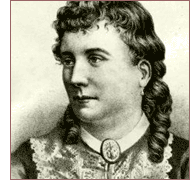
Mary Elizabeth Braddon was an English popular novelist of the Victorian era. She is best known for her 1862 sensation novel Lady Audley's Secret, which has also been dramatised and filmed several times.

Sir Henry Rider Haggard was an English writer of adventure fiction romances set in exotic locations, predominantly Africa, and a pioneer of the lost world literary genre. He was also involved in land reform throughout the British Empire. His stories, situated at the lighter end of Victorian literature and including the eighteen Allan Quatermain stories, continue to be popular and influential.
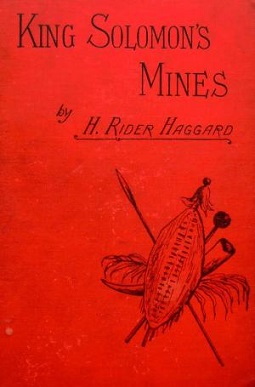
King Solomon's Mines (1885) is a popular novel by the English Victorian adventure writer and fabulist Sir H. Rider Haggard. It tells of an expedition through an unexplored region of Africa by a group of adventurers led by Allan Quatermain, searching for the missing brother of one of the party. It is one of the first English adventure novels set in Africa and is considered to be the genesis of the lost world literary genre. Haggard dedicated this book to his childhood idol Humphry Davy.

She, subtitled A History of Adventure, is a novel by the English writer Sir H. Rider Haggard, published in book form in 1887 following serialisation in The Graphic magazine between October 1886 and January 1887. She was extraordinarily popular upon its release and has never been out of print.
The Azusa Street Revival was a historic series of revival meetings that took place in Los Angeles, California. It was led by William J. Seymour, an African-American preacher. The revival began on April 9, 1906, and continued until roughly 1915.
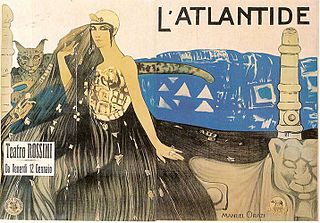
Atlantida is a fantasy novel by French writer Pierre Benoit, published in February 1919. It was translated into English in 1920 as Atlantida. L'Atlantide was Benoit's second novel, following Koenigsmark, and it won the Grand Prize of the French Academy. The English translation of Atlantida was first published in the United States as a serial in Adventure magazine.

Vernon Lee was the pseudonym of the British writer Violet Paget. She is remembered today primarily for her supernatural fiction and her work on aesthetics. An early follower of Walter Pater, she wrote over a dozen volumes of essays on art, music and travel.
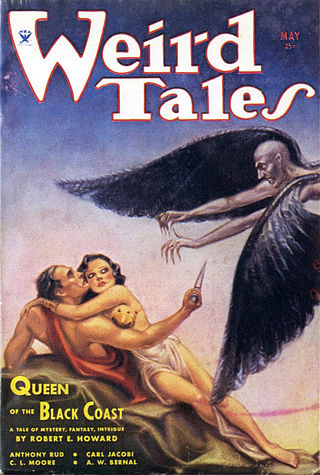
"Queen of the Black Coast" is one of the original short stories about Conan the Cimmerian, written by American author Robert E. Howard and first published in Weird Tales magazine c. May 1934. Set during the fictional Hyborian Age, Conan becomes a notorious pirate plundering the coastal villages of Kush alongside Bêlit, a head-strong femme fatale.
Dr. Richard Austin Freeman was a British writer of detective stories, mostly featuring the medico-legal forensic investigator Dr. Thorndyke. He invented the inverted detective story. This invention has been described as Freeman's most notable contribution to detective fiction. Freeman used some of his early experiences as a colonial surgeon in his novels. Many of the Dr. Thorndyke stories involve genuine, but sometimes arcane, points of scientific knowledge, from areas such as tropical medicine, metallurgy and toxicology.
The lost world is a subgenre of the fantasy or science fiction genres that involves the discovery of an unknown Earth civilization. It began as a subgenre of the late-Victorian adventure romance and remains popular into the 21st century.

The World's Desire is a fantasy novel first published in 1890 and written by H. Rider Haggard and Andrew Lang. It was published in paperback by Ballantine Books as the fortieth volume of the Ballantine Adult Fantasy series in January 1972.
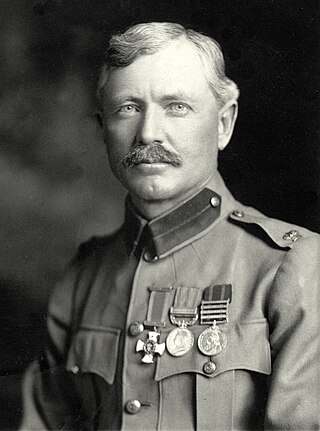
Frederick Russell Burnham DSO was an American scout and world-traveling adventurer. He is known for his service to the British South Africa Company and to the British Army in colonial Africa, and for teaching woodcraft to Robert Baden-Powell in Rhodesia. Burnham helped inspire the founding of the international Scouting Movement.

Cleopatra: Being an Account of the Fall and Vengeance of Harmachis is an adventure novel written by English author H. Rider Haggard and first printed in 1889 by Longmans. Cleopatra mixes historical action with supernatural events, and could be described as a historical fantasy novel.

She and Allan is a novel by H. Rider Haggard, first published in 1921. It brought together his two most popular characters, Ayesha from his 1887 novel She, and Allan Quatermain from his 1885 novel King Solomon's Mines. Umslopogaas from Nada the Lily also appears in the novel as a major character. Along with the other three novels in the series, She and Allan was adapted into the 1935 film She.

Nada the Lily is an historical novel by English writer H. Rider Haggard, published in 1892. It is said to be inspired by Haggard's time in South Africa (1875–82). It was illustrated by Charles H. M. Kerr.

Cassell's Magazine is a British magazine that was published monthly from 1897 to 1912. It was the successor to Cassell's Illustrated Family Paper, (1853–1867) becoming Cassell's Family Magazine in 1874, Cassell's Magazine in 1897, and, after 1912, Cassell's Magazine of Fiction.
Stella Fregelius: A Tale of Three Destinies is a 1904 novel by the British writer H. Rider Haggard about a young inventor who falls in love with a mysterious stranger while he is engaged to another woman. As a novelist, Haggard is known primarily for his adventure novels. Among his most widely read and critically acclaimed novels are King Solomon's Mines, Allan Quatermain and She. After his publication of She, Haggard wrote at least one novel a year every year until his death in 1925.

The Ghost Kings is a 1908 mystery-adventure novel by H. Rider Haggard, set on the borders of Zululand in Africa.

The Treasure of the Lake is one of the two posthumously published novels by H. Rider Haggard featuring Allan Quatermain. In publication order it is the seventeenth of the eighteen Allan Quatermain stories.
















